York Castle Museum is a museum located on the site of York castle, which was originally built by William the Conqueror in 1068. The museum was founded by John L. Kirk in 1938 and is housed in the prison buildings which were built on the site of the castle in the 18th century.
Here at the Science Museum Group we have developed nine engagement reflection points that help us critically think about the experiences we offer through the eyes of our audience and as I explored the museum I kept these engagement reflection points in the back of my mind to help me think more critically about my visit.
the timeline

Period rooms
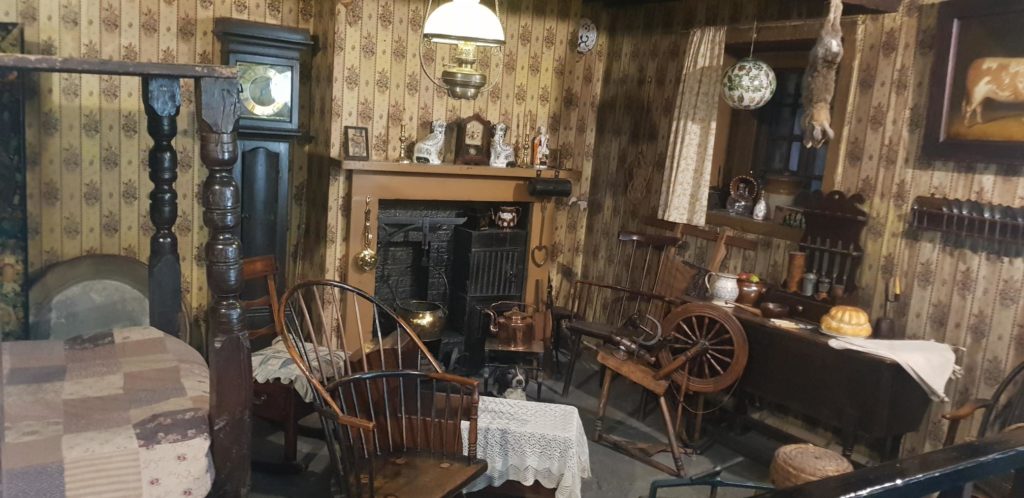
Next, I came to a series of rooms from different eras. You couldn’t step into the rooms themselves, but the incredible detail made them feel like little time capsules allowing me to look into what felt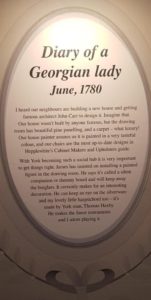 like a 3-d painting.
like a 3-d painting.
These rooms were great for letting people compare and contrast to their own rooms at home. I wouldn’t have been surprised if people lived there once the museum had closed for the day. The rooms also showed changes to our diets.
The addition of diary entries helped provide the older audience with more information and further set the scene. The rooms were detailed and interesting enough for all age groups to enjoy.
toy stories
The next exhibit was spread across several large rooms. I walked down the centre and on each side were a series of fenced zones which were full of different era toys. It’s a fairly horrifying experience seeing toys you had as a child now in a museum.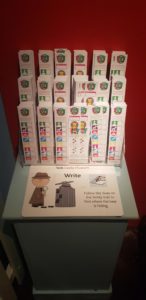
There was a trail which aimed to get children to look closer and explore in the exhibit. The challenge was to find the toys on the trail to find clues to lead them to a hiding teddy bear. This helped younger visitors to look closer at the exhibits. These were well presented and colourful to draw people in.
The signage around the trials was clear and eye catching. It was obvious what you needed to find which made it accessible to everyone- even those with potential language barriers. They also allow families to explore together which creates an inclusive atmosphere and provides confidence and ownership for groups.
We at the Science Museum Group (SMG) enjoy a trail as they are a wonderful way to help give people more confidence and ownership when visiting museums.
use of technology
Moving downstairs there were two screens set up which had a modern-day shop worker talking to a shop worker from 100 years ago. The video had good audio which would be easy to hear even if the museum was crowded and had captions.
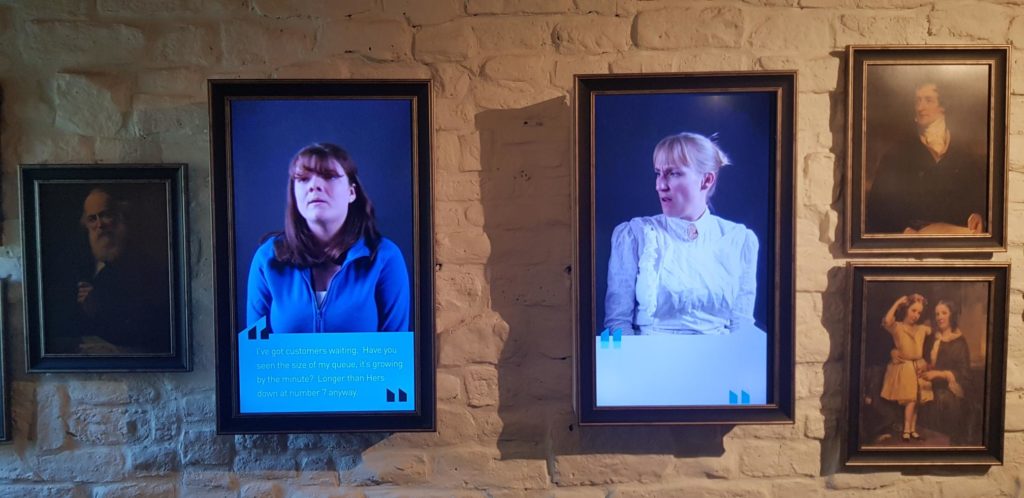
These videos were great for comparing the past and present by drawing out everyday examples which everyone could relate to, even if you hadn’t worked in a shop before.
This inspired me to reflect how a similar use of technology could be used with two scientists or engineers from present and past discussing how they conduct their jobs.
Doing this with video rather than just transcribing the conversation on a board is unique and made it accessible so everyone could appreciate it.
kirkgate: the victorian street
The Victorian Street is one of the highlights of the Castle Museum, and it didn’t disappoint. Stepping out into the street you are instantly teleported back in time. The area was loaded with smells, sounds, and lighting which helped create a fantastic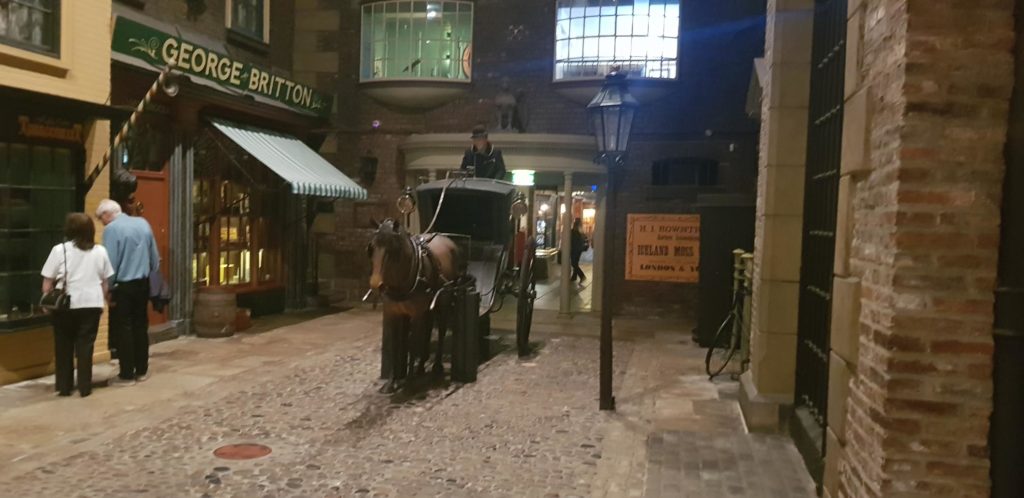 atmosphere.
atmosphere.
I have to admit I had a few nervous glances over my shoulder, in case of an ambush, when walking down the section set up like the slums. A wonderful addition was having staff members in costume placed within some of the shops and interacting with visitors on the street.
The staff created a safe environment where people were encouraged to ask questions and explore their curiosity. What was great is that they assumed no prior knowledge which is a bug bare of mine as you see a lot of facilitators assume because they’re talking to an adult that they will know everything they do- it was great to not see this at the Castle Museum.
As an added touch the museum staff were in character, and it felt as though you were talking to someone from the past.
My personal highlights of the street were the Victorian classroom, the old sweet shop, even though they weren’t giving away free sweets, and the old police station- though I think the police station made my top three because I locked my colleague, who visited with me, inside. The sweet shop and classroom are familiar places in the world today, so they were more accessible to make comparisons to.
the prison
The spookier part of the museum is the old York castle prison. Like the Victorian street the atmosphere created is absorbing and makes you feel like you’re in prison. Whereas the street needed some modern technology to help create the atmosphere the prison created it mostly by itself.
It was dark and, whilst it wasn’t damp in reality, you wouldn’t have been surprised to see water dripping down a wall or a rodent scurry across the ground. For full disclosure- no rodents were present in the experience.
Inside the cells there was great use of video, highlighting some of the famous occupants, to help you understand what it would have been like to have been inside the prison when it was in operation.
I personally would have liked to have known some more examples of the “common people” stories. I learnt recently about some families sometimes chose to live in the debtor’s prison in order to avoid the workhouse- I would have enjoyed seeing more of these types of stories.
This took absolutely nothing away from the experience in the prison, however, which was a frightfully good experience.
100 women changemakers
At the Castle Museum they have a wonderful display focused around 100 women changemakers. This showcased the stories of 100 women who have made a difference in the City of York.
It’s important to show everyone that they can be involved in STEM, no matter their background and broadening perception’s of who uses STEM is one of our key engagement reflection points.
no matter their background and broadening perception’s of who uses STEM is one of our key engagement reflection points.
This display focused on history but the idea of broadening perception of who has made an impact to the world is the same and makes positive steps towards giving everyone, from all backgrounds, a role model to look up to.
I discovered after my visit that the 100 women changemakers is part of a York wide community project called “Her Story York” aiming to make invisible women more visible.
Related blogs
Have you visited the York Castle Museum before? Let us know your thoughts below.
In our ‘out and about’ series we go searching for examples of good science engagement practice. Have you visited anywhere which demonstrates good science engagement practice?